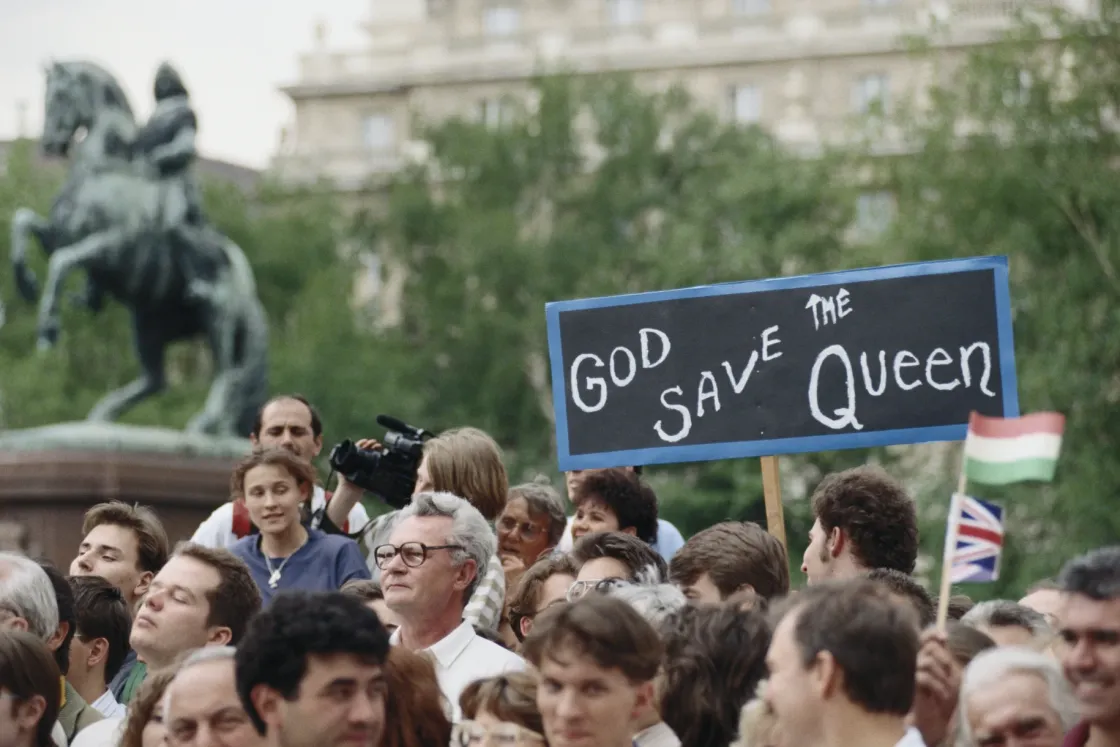
Queen Elizabeth II and the Duke of Edinburgh spent four days in Hungary in May 1993. Their visit was covered in detail both by the Hungarian and the foreign press. The Queen saw the Holy Crown of Hungary, visited museums and gave a speech at Parliament. In addition to the usual political visits, she also made a stop at a homeless shelter and had a bite to eat at a farmhouse in Bugacpuszta, with cither music in the background. We looked up some old newspaper articles to remember her visit, and how much Hungary loved her.
Almost 250 journalists, including 139 Hungarian, 50 English and 46 other foreign reporters were accredited in May 1993 to follow the journey of Elizabeth II through Budapest and the Hungarian countryside. The media interest in itself showed how big a deal it was that the Queen of England was visiting our country: as the Times wrote at the time,
"Since Hungary regained democracy in 1989, the Queen is the second most popular foreign guest after the Pope. The visit underscores Hungary's urgent desire to join the West and its search for security in the European Community and NATO, being in a region fraught with tribal warfare.”
Elizabeth II's visit was an important political encounter. Hungary was still under the impact of the regime change, with the fall of communism and the newly elected parliament being a reason for joy at home while the war in neighbouring Yugoslavia was a source of concern. The British monarch's visit at this time had a tremendous political significance: to a Hungary proud of its regime change came the Queen of England, who was known to be a supporter of democracy and freedom.
During the Queen's visit, Árpád Göncz, then President of Hungary, almost constantly stressed the importance of Hungarian-English relations and the intertwining of their histories. Göncz noted that England had been a role model for Hungary during the reform era, and that "Hungarian society had an extraordinary affinity towards English literature and culture” even during the World War. The Queen's visit excited the Hungarians as well, and the Daily Telegraph wrote of this admiration half fondly, half derisively:
"In Hungary, the Queen is regarded as one of their own, as the press has made it abundantly clear that Queen Mary's grandmother, Countess Claudia Rhédey, was Hungarian. However, this only makes Elizabeth II only one-sixteenth Hungarian.”
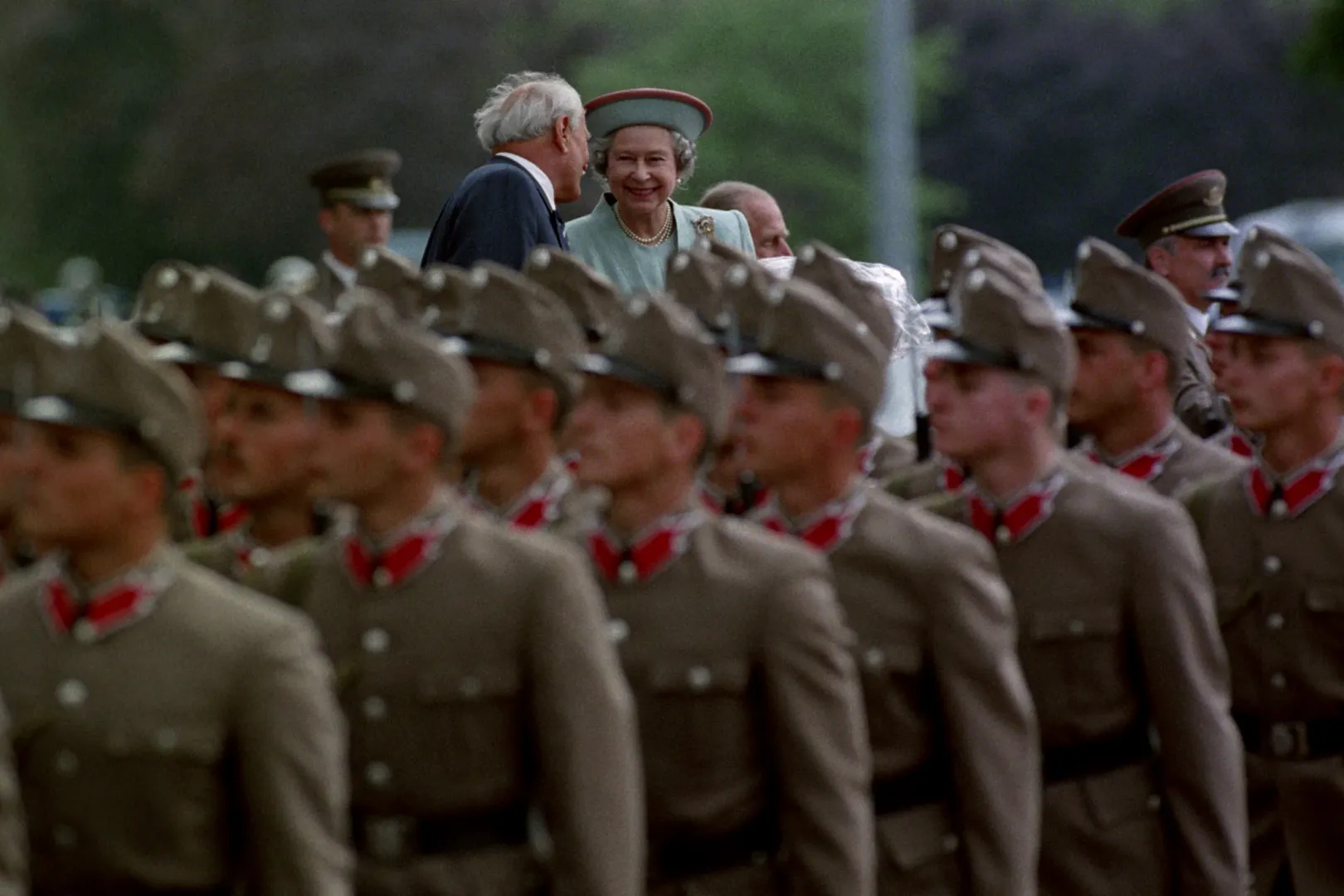
"I've always wanted to come to Hungary, so it's a special moment for me to be here in Budapest,” said Elizabeth II after arriving in Hungary with her husband, Prince Philip. In the hours leading up to the Queen's arrival, Hungarians were abuzz with excitement as they gathered to await her coming.
Just hours before the British private jet landed, Árpád Göncz gathered the journalists to say that it was thanks to the English language that he had survived until the fall of the regime. Before the President of the Republic left to meet the royal couple at the airport, he added:
"His first meeting with Her Majesty in 1991 will always be a cherished and unforgettable memory for him. He said that the Queen showed a genuine, heartfelt interest in Hungary. The President of the Republic jokingly remarked that he can guarantee that the people greeting the royals on the streets would not be the same as the crowds once herded out by communist methods.”
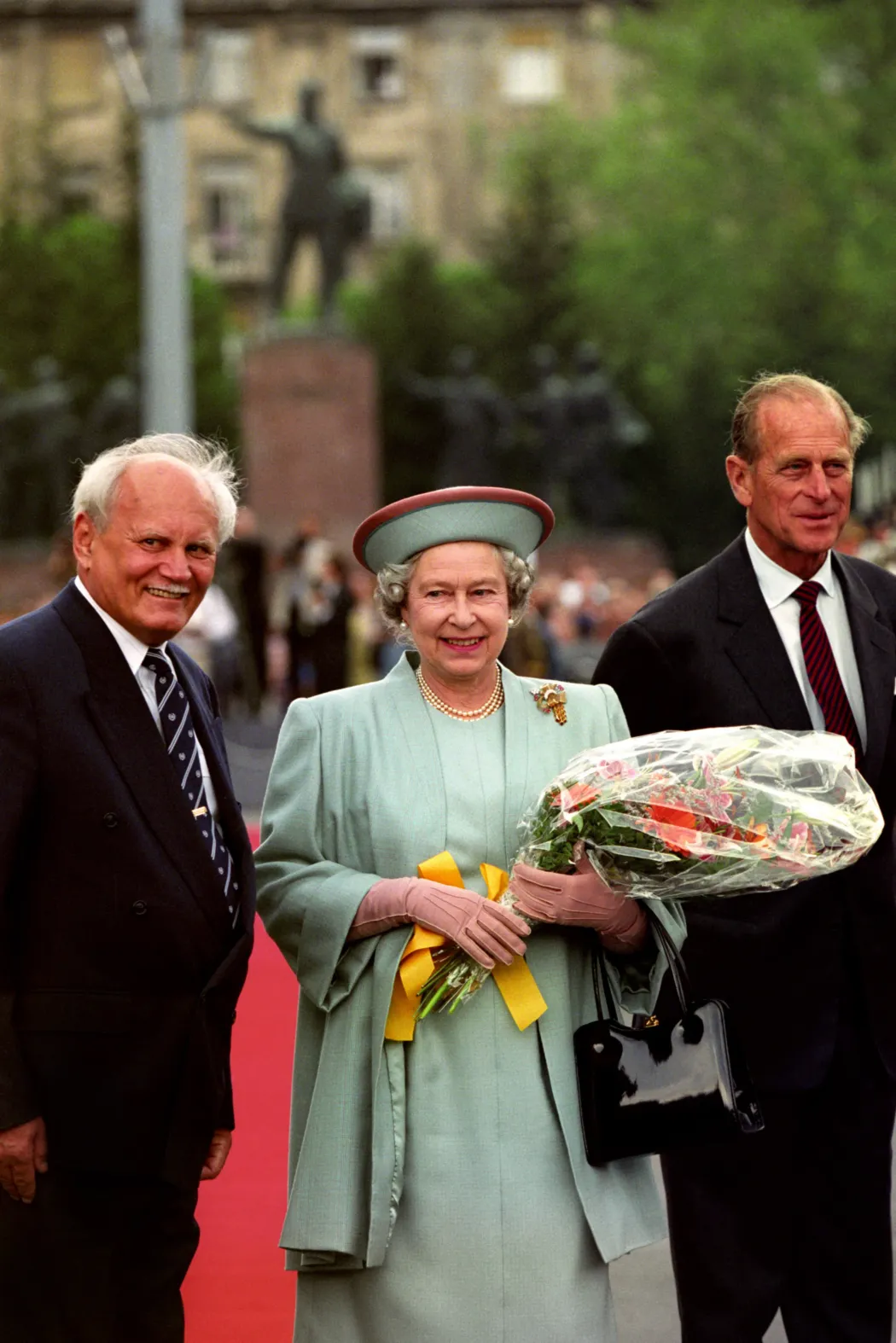
Göncz also stressed to journalists that he "hoped the visit would also be a testimony to the achievements of our country and to the warm and smooth Hungarian-English relations”. But the politicians tried to emphasise the important political link in vain, as the journalists and artists saw something else in the Queen: her Hungarian roots.
Elizabeth II's great-great grandmother, Claudia Rhédey, was a Transylvanian countess, and although the countess' native land was part of Romania at the time of the Queen's visit, she was still considered Hungarian (note: Transylvania used to belong to Hungary until the treaty of Trianon in 1920). The Széchenyi National Library had prepared an exhibition for the royal couple on the Queen's Hungarian ties, where the surviving written documents and objects of the Rhédey family were on display.
When asked by journalists, people on the street commented that "Queen Elizabeth II is considered by Hungarians as one of their own, because of her great-great-grandmother,” as one old lady in Budapest remarked. And the newspapers sometimes put it bluntly:
"Only the superficial spectator who wanders blindly through the world would not have noticed the playful ease and unobtrusiveness with which the British queen blended into the Hungarian landscape, as if she were an integral part of it.”
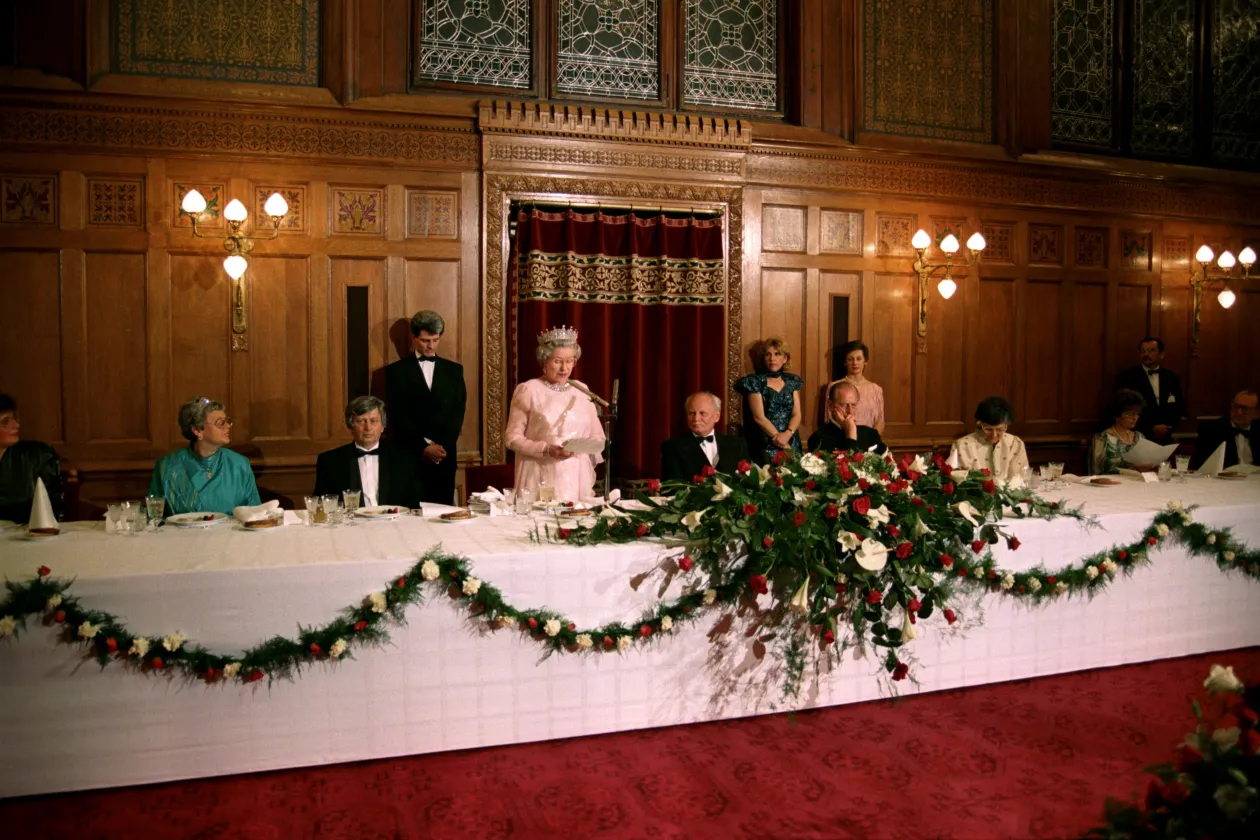
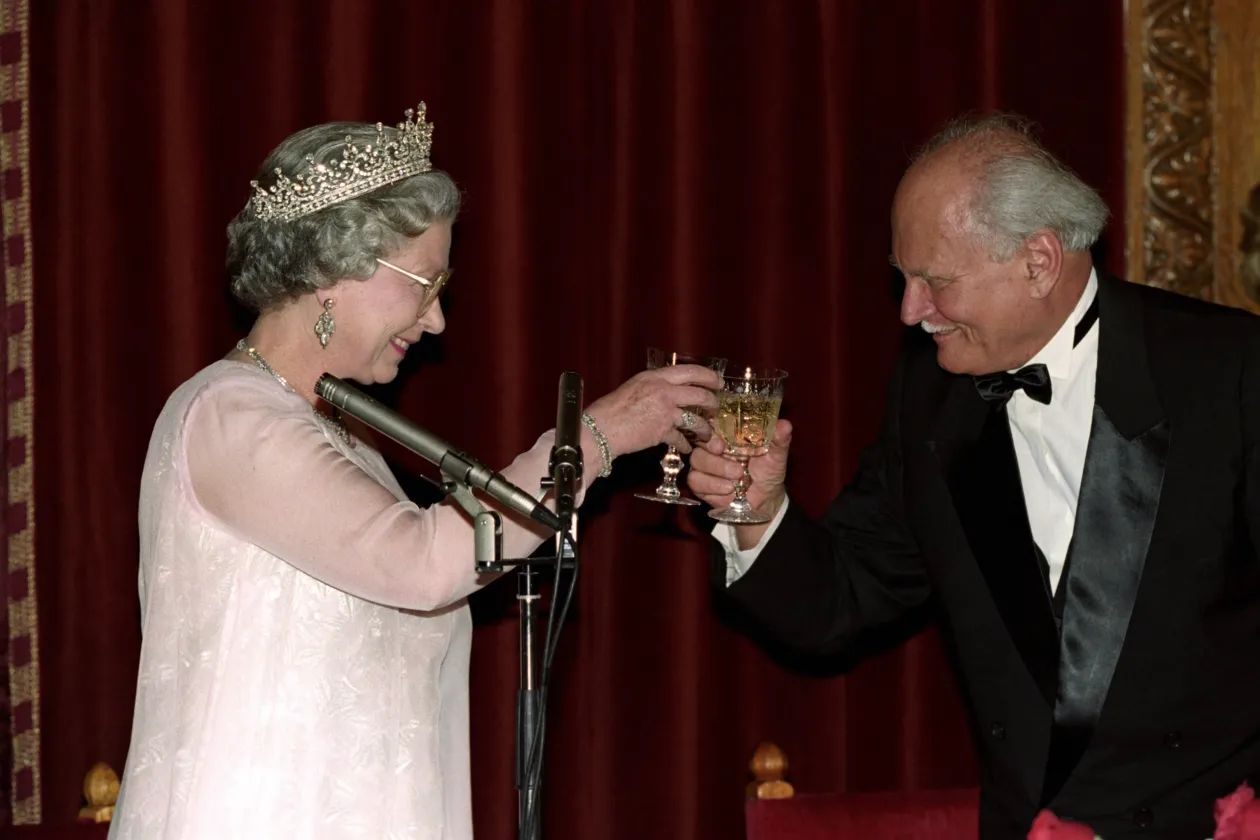
"Hungarians have an almost pathological respect for all things British, and we can identify with the British as much as we are different from them” Élet és Irodalom wrote before the Queen's visit. The British visit did make a big impression on Hungarians, as Göncz told the Queen at a banquet in the Parliament's Hunter's Hall on 4 May:
"This visit is an outstanding event in Hungarian-British relations, as it is the first time that we have welcomed a British monarch in Hungary.”
The Queen reciprocated Göncz's friendly gestures, saying that the British "have admired and delighted in all that the Hungarians have done to enrich the world of science, music, art and literature”. Elizabeth II also spoke of Kossuth's arrival in London in 1851 and of the 1956 revolutionaries who were sheltered by England. To crown the whole diplomatic exchange, Göncz added a reference to 1953 (when Hungary defeated England 6:3):
"The Queen's visit signals England's forgiveness for the football defeat.”
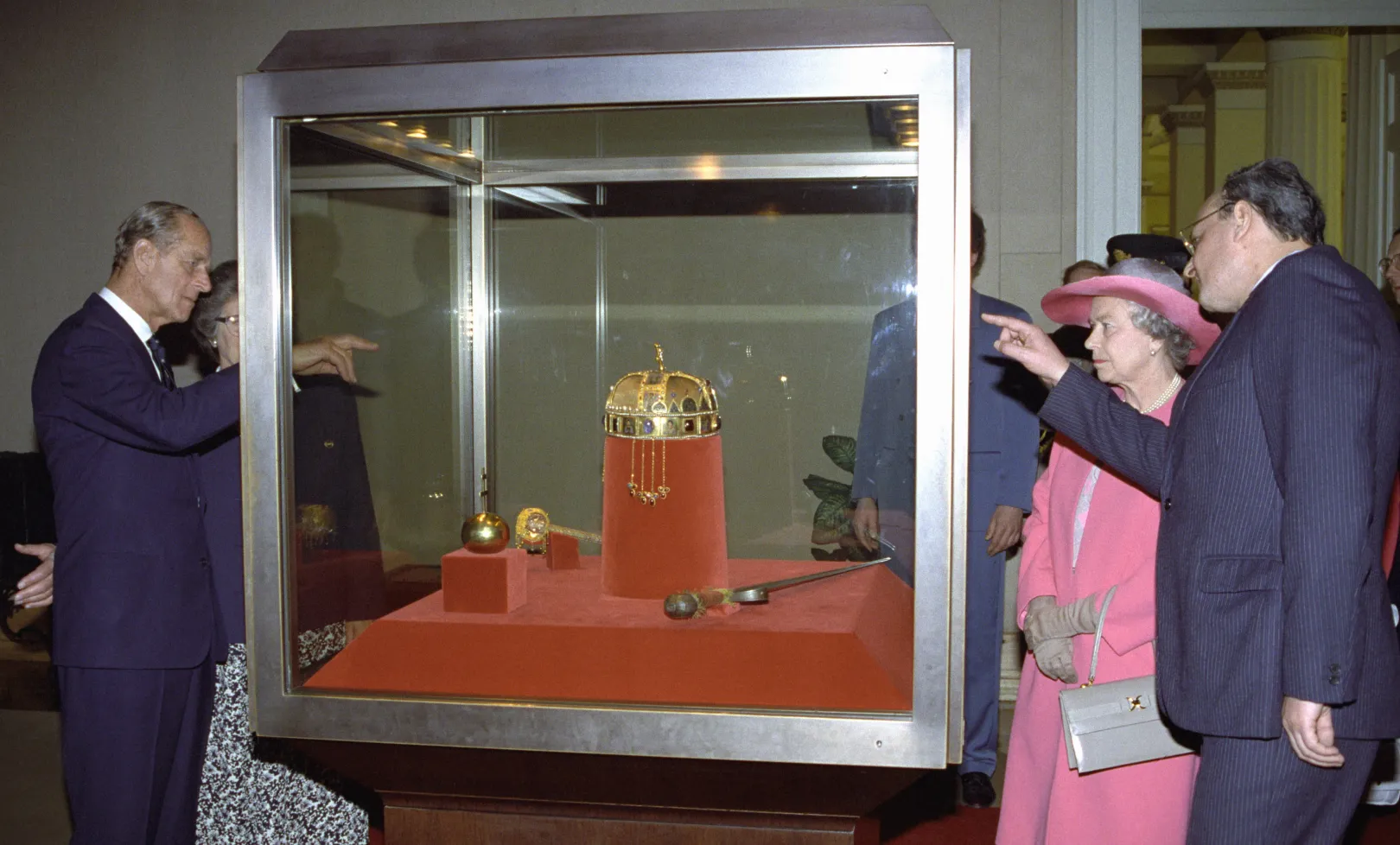
One of the most heartfelt commemorations from the contemporary press was connected to Elizabeth II's visit to the National Museum on 5 May. Crowds had already gathered on Múzeum Körút and in the Museum's Garden before her arrival. After the royal couple's arrival, the Queen “waved from the top of the museum steps to greet the crowds of Budapest citizens who had gathered to honour her”.
As the museum's memorandum recounts, the royal couple were shown around the building by the museum's director, István Fodor. Elizabeth II viewed the Hungarian Holy Crown, the coronation regalia and the coronation robe:
"Elizabeth II was interested in the age of the two parts of the crown and also asked why the cross on the crown was so crooked. Then, stepping up to the coronation robe, she also wanted to know how the inscription on it, dating from 1031, was made. Following this, the Queen signed the museum's guest book.”
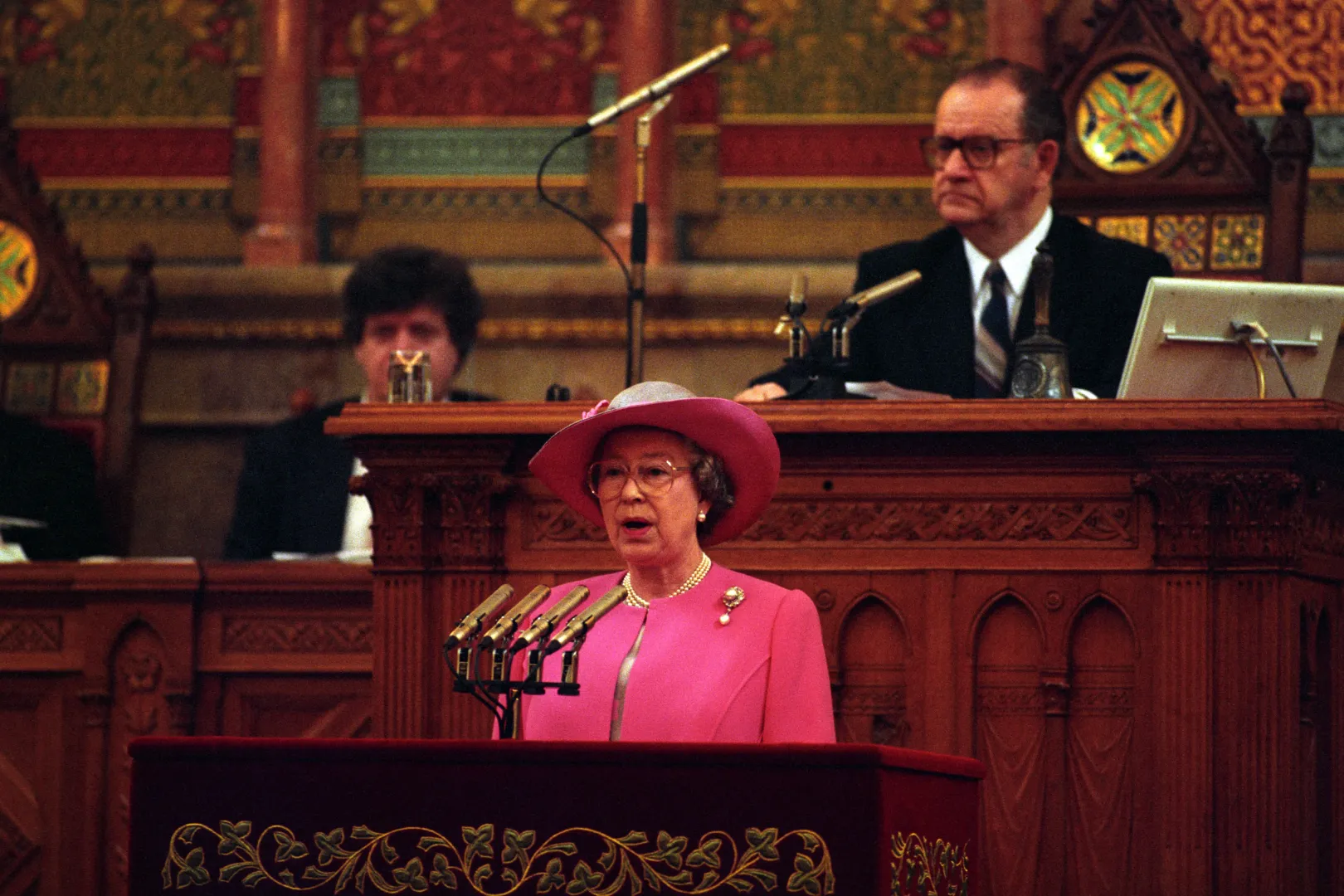
Thousands of Hungarians gathered in front of the Parliament on 5 May. During the week of Elizabeth II's visit, Parliament held an extraordinary three-day session, and the Queen addressed the plenary session after spending about half an hour in Parliament. According to reports, there was a lot of tension among politicians, with "some MPs shuffling their feet before the speech”. Then
"At last Queen Elizabeth II enters the box. Thunderous applause breaks out, and everyone stands up. As the Chief of Protocol leads her to the podium, a stretched out hand reaches out to touch her from between the rows of chairs. Elizabeth is momentarily perplexed, but a Hungarian MP comes to her aid unsolicited: he forcefully lays his hand on the outstretched arm of his irresponsible colleague…The historic speech is delivered.”
The Queen began her iconic speech by "burying communism as she spoke to the first freely elected parliament to emerge from behind the Iron Curtain”, the London Evening Standard reported. The Queen then spoke of 1956, “when Hungary's light was brutally extinguished”. She added: ”Hungary has now rekindled that flame, which is all the brighter because of the sacrifices made for it.”
In her speech, the Queen also spoke of a “path of freedom” and a ”peaceful path” leading Hungary to “independence and democracy”. She hailed free society, quoted Kossuth, and highlighted Hungary's ”generosity in helping refugees” fleeing the Yugoslav war. Finally, she concluded by saying:
"It is a cliché to say that these are difficult times. But this has perhaps never been truer than today.”

The area around the Dankó Street shelter was full of police officers long before the Queen's arrival. After her speech in Parliament, the Queen visited a homeless shelter where she met with local charity leaders on a "visit that lasted longer than planned".
At the gates of the shelter she was received by Tibor Iványi, President of the Hungarian Evangelical Fellowship, Miklós Haraszti, Member of Parliament for Józsefváros, and Gábor Iványi, President of the Oltalom Charitable Association. As the newspapers of the time wrote, although some politicians "complained that the Queen was visiting one of the poorest districts of Budapest, and even a homeless shelter", the visit was a positive one, despite the politicians' complaints:
"Dankó Street will be famous," someone shouts from behind us, from the crowd. (...) In conversations that strictly adhered to the boundaries of protocol, she made no promises and didn't magically transform anyone into a prince, but her visit might yet give strength and faith to the advocates of the destitute."
– one newspaper wrote. The news of the Queen's arrival was greeted with applause as the people of the area flocked to greet Elizabeth as she got out of the car. The Queen “asked Dr István Samu, the great doctor of alcoholics and the homeless, why someone becomes homeless.”
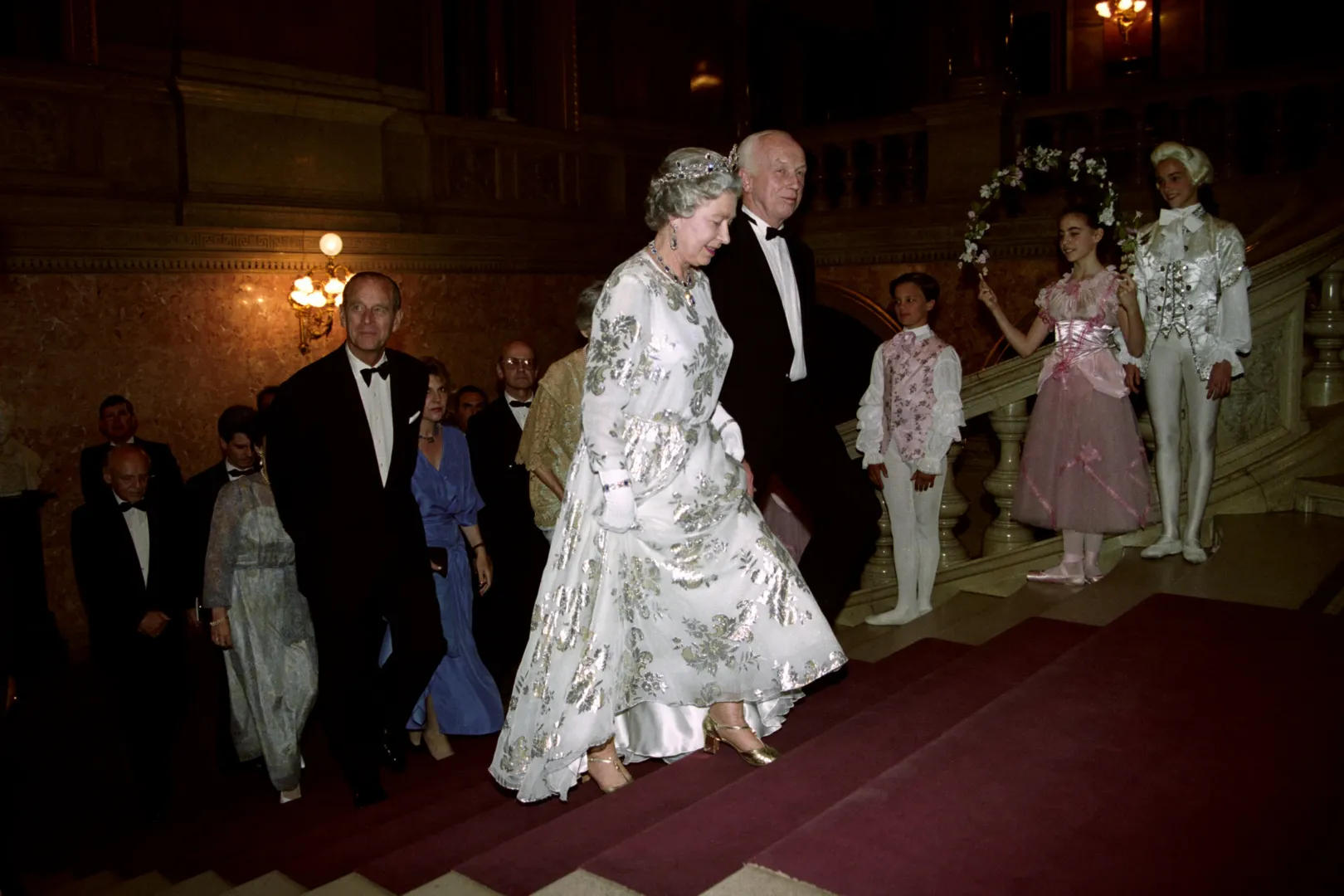
After the homeless shelter, Prince Philip sailed into business waters as part of a special programme, visiting the British-Hungarian joint venture Coats Hungary, and then touring the European Lifestyle Exhibition at the Budapest University of Economics and Business. In the evening, he reunited with his wife for a visit to the Opera House to see Tchaikovsky's ballet Sleeping Beauty.
Prince Philip, who sometimes went on separate trips from his wife, was barely mentioned in the press. They mainly emphasised the gifts he had received from the Hungarians. Perhaps the most beautiful of these was the gift of a Herend cigarette set, to which the Prince reacted by saying:
“What a huge ashtray! I can't smoke that much, I'll keep chocolate in it.”

The only thing Hungarian readers found out from the country's press of the time about the evening at the Opera was that Elizabeth II was "dressed in a silver gown with gold embroidery, and wore a diadem on her head, looking like a fairy-tale queen". It is interesting that the visit to the Opera House performance was hardly covered by journalists, while the royal dinner at the renowned Gundel Restaurant in the company of Géza Jeszenszky, József Antall, Ferenc Mádl and Béla Kádár was described in such detail as follows:
“György Láng, the co-owner of the prestigious restaurant in City Park, said that the four crowns were not just a play on words, as each course was served in the shape of a crown and decorated with a crown. The meal began with salmon served with Hungarian asparagus, followed by pigeon essence. The main course was veal tenderloin, accompanied by paper-thin potato crowns stuffed with Hungarian wild rice and morel mushrooms stuffed with goose liver. The dessert was a crown baked from thin, crispy pastry.”
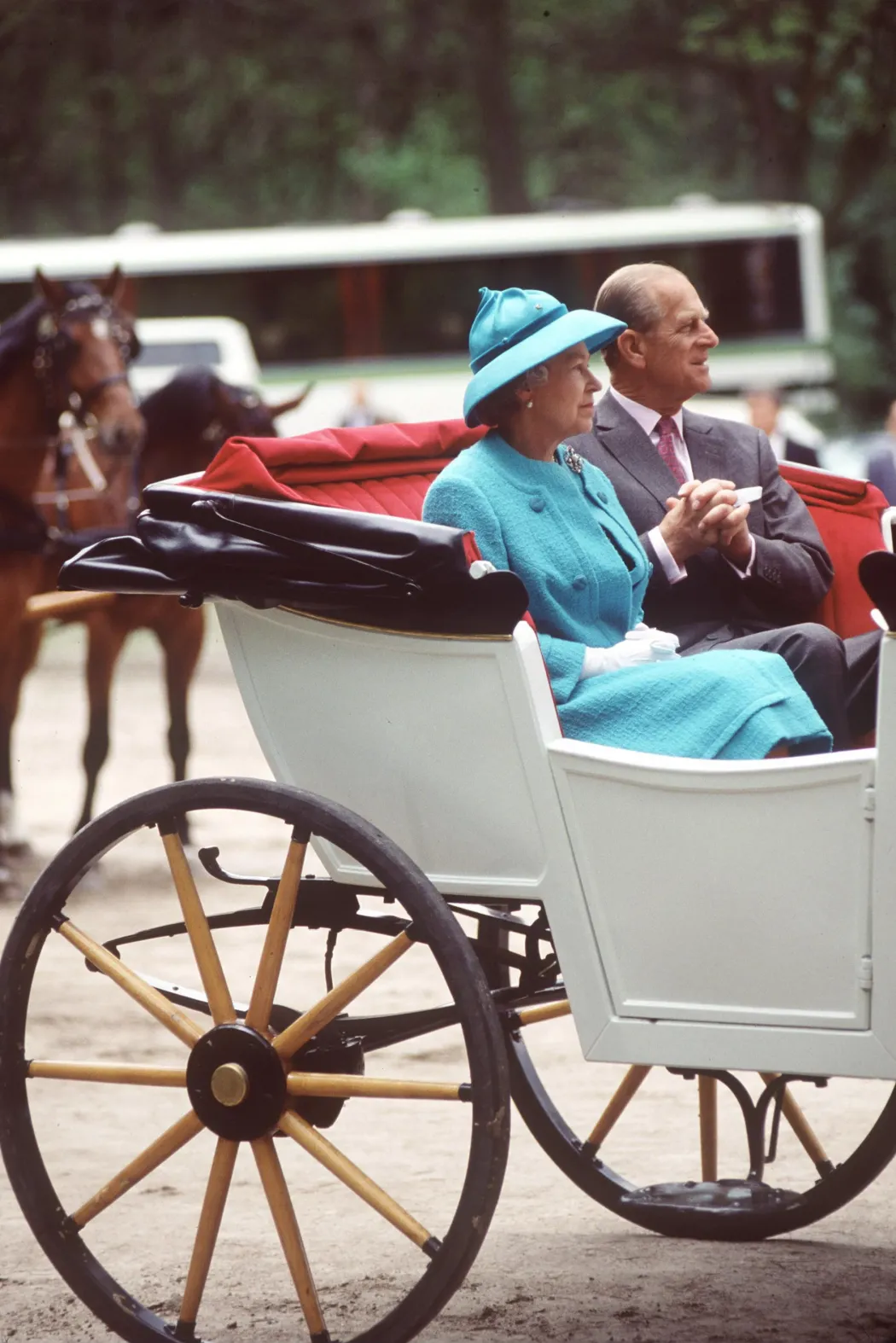
The Queen then also visited the countryside, and as the first part of her tour of Hungary, she and Prince Philip visited Kodály High School in Kecskemét. There, "the royal guest was greeted with a performance of the girls' choir and the cheers of several thousand people". Elizabeth II then took a long walk in the main square, then "visited the City Hall, in front of which she solemnly received the keys to the city".
The visit to Kecskemét was also important because British companies were beginning to establish themselves in the Hungarian countryside more and more at the time. Queen Elizabeth described "the Great Plain" as a wonderful place, adding that she was delighted,
“to have had the opportunity to see something of the countryside, a landscape which is not alien to the East of England, my home.”
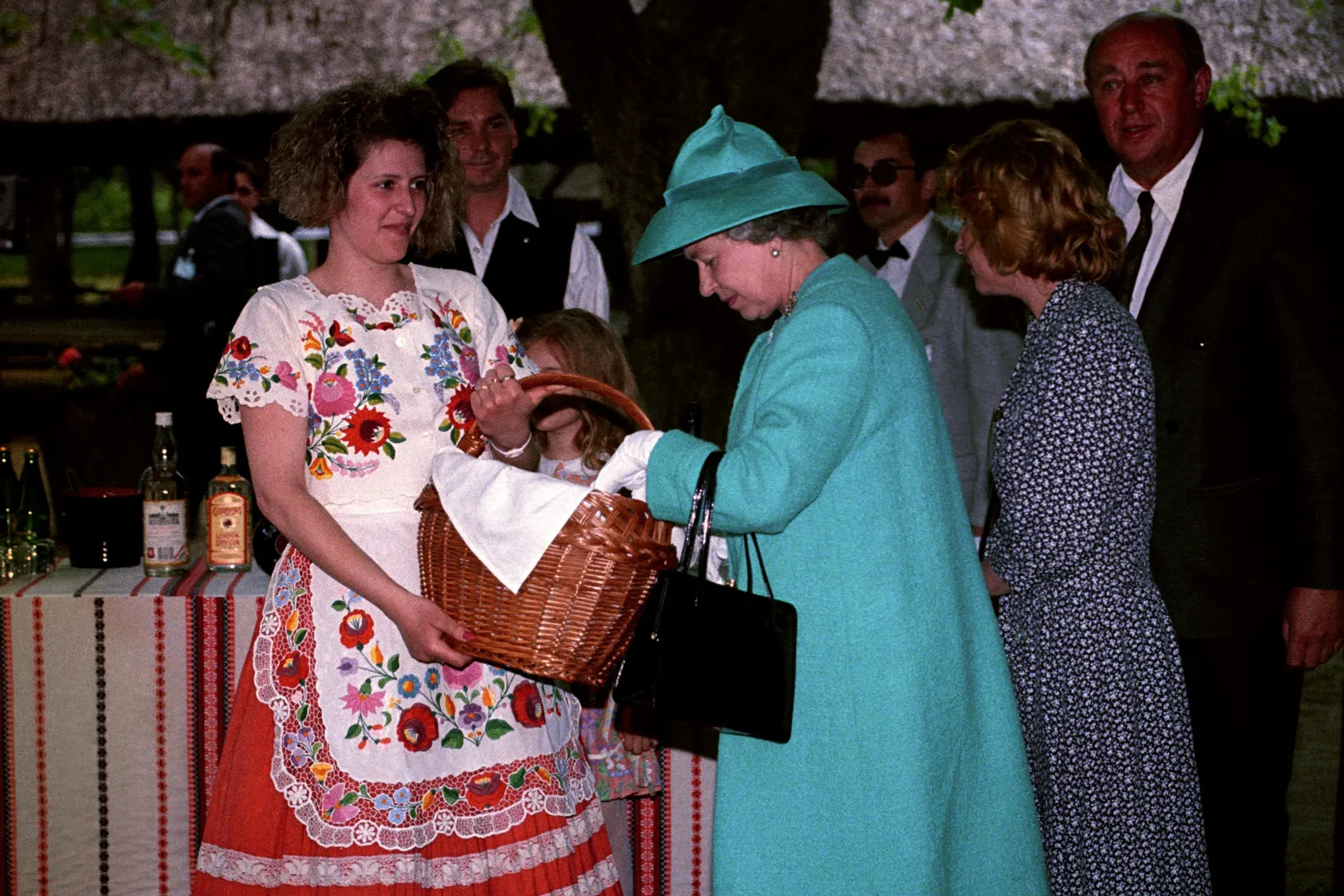
"In honour of the Queen, the town of Kecskemét was festively decorated with English and Hungarian flags adorning the centre of the town, and thousands of people greeted the royal couple."
Elizabeth's visit to Kecskemét was important for several reasons, and in addition to being known for the Hungarian traditional dress, the rural town was also a place where several denominations were represented. In Kecskemét's Great Church, The Queen prayed together with the leaders of various denominations – Roman Catholics, Reformed, Evangelical, Orthodox and Jewish.

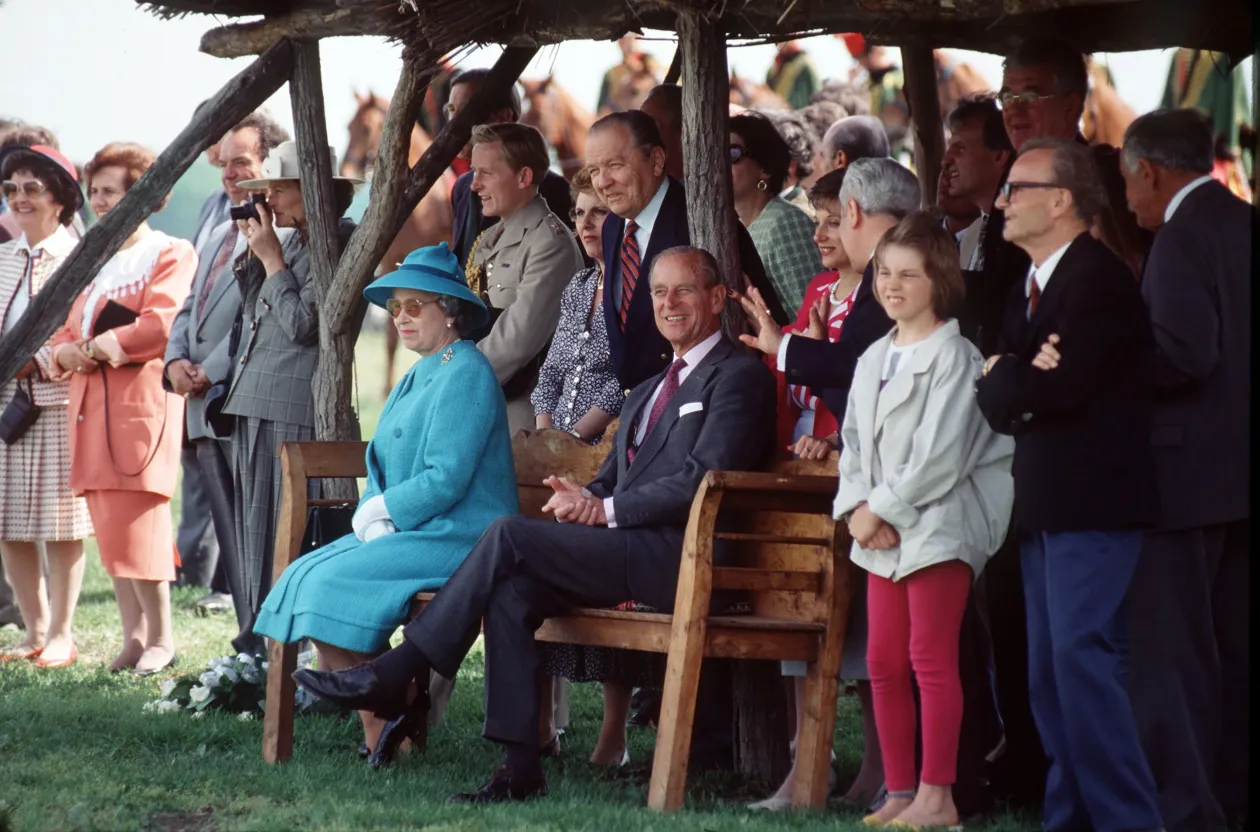
"At the entrance to the tavern in Bugac, the British monarch was greeted with traditional Hungarian music, cottage cheese and crackling scones and peach brandy, among other things."
After Kecskemét, the royal couple headed for the tavern in Bugac, where they were welcomed in true Hungarian fashion, with pálinka (Hungarian brandy). Later, they were treated to a "dance performance", followed by a horse show in Bugacpuszta, where the Queen "herself was visiting for the first time, but her son Charles had been here before".
After this Elizabeth II rode to a farm with a horse-drawn carriage, "driven by László Juhász, the 1982 four-in-hand world champion". At the farm, the Queen encountered something gastronomically simpler than Gundel Restaurant, but all the more heartwarming: the "horsemen and shepherds" of the countryside prepared sausages, the so-called peasant-bowl, liver with onion, and, in the old Hungarian tradition, even baked rooster for her. There was also a selection of strudels, bukta (cake with jam filling and doughnuts on the table as the traditional music played in the background. Moreover, she ate all of this in quite a special outfit. The Daily Telegraph wrote at the time,
“The queen drew fashion inspiration from history, which charmed the good-loving Hungarians of the Great Plain (...) When she travelled to the countryside, her hat recalled the days when Attila the Hun and his hordes rode through the plains – though this style of hat was rarely seen in blue until now.”
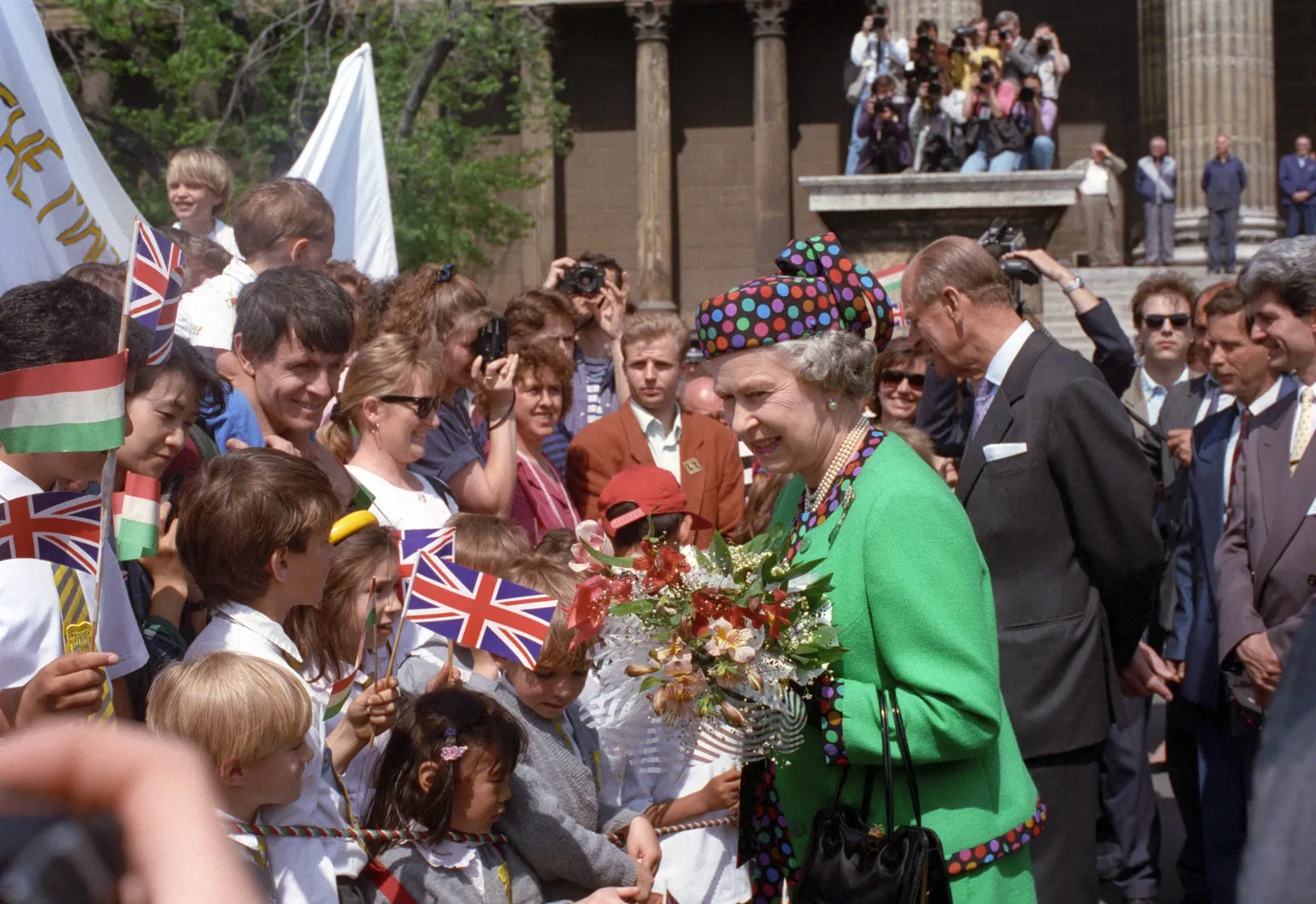
On the last day of her visit, the Queen of England laid a wreath at Heroes' Square, wearing a "green suit with a coloured border and a multicoloured-purpleish hat with the same pattern as the border". The royal couple then walked past the people celebrating them to the Museum of Fine Arts and lastly took a boat trip on the Danube.
The Hungarians gave the Queen a huge ovation, and Gábor Demszky, then Mayor of Budapest, said that "the Queen's visit to Budapest will be recorded in Hungarian history books as a prestigious event in a new chapter of our history". The royal couple then departed for the airport, and the Hungarian newspapers were left with opinion pieces such as:
“Judging from the fragments of her statements, Elizabeth II liked the Hungarian people and, by all accounts, the Hungarian people liked Elizabeth II. The Hungarian people were not bothered by the fact that they had no basis for comparison, since they did not know Elizabeth I. The people welcomed the second in their hearts and moved on.”